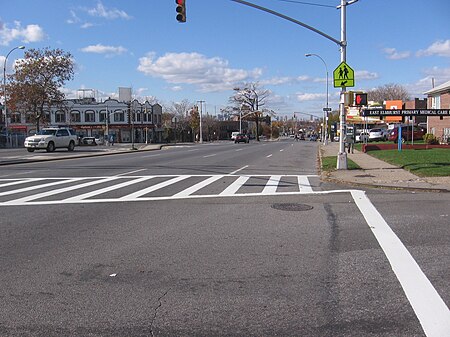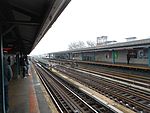East Elmhurst, Queens

East Elmhurst is a residential neighborhood in the northwest section of the New York City borough of Queens. It is bounded to the south by Jackson Heights and Corona, to the north and east by Bowery Bay, and to the west by Woodside and Ditmars Steinway. The area also includes LaGuardia Airport, located on the shore of Flushing Bay, LaGuardia Landing Lights Fields, and Astoria Heights (the latter two in ZIP Code 11370). East Elmhurst is part of Queens Community District 3 and its ZIP Codes are 11369, 11370, and 11371. The neighborhood is patrolled by the New York City Police Department's 115th Precinct, though the airport is patrolled by the Port Authority Police Department. East Elmhurst and its southern neighbor Corona are often referred to jointly as "Corona/East Elmhurst".
Excerpt from the Wikipedia article East Elmhurst, Queens (License: CC BY-SA 3.0, Authors, Images).East Elmhurst, Queens
Astoria Boulevard, New York Queens
Geographical coordinates (GPS) Address Nearby Places Show on map
Geographical coordinates (GPS)
| Latitude | Longitude |
|---|---|
| N 40.761 ° | E -73.865 ° |
Address
Astoria Boulevard 104-04
11369 New York, Queens
New York, United States
Open on Google Maps






